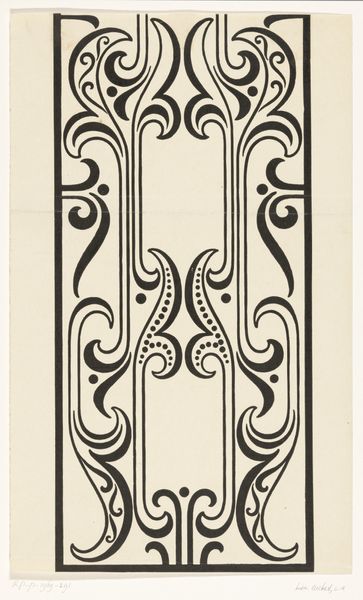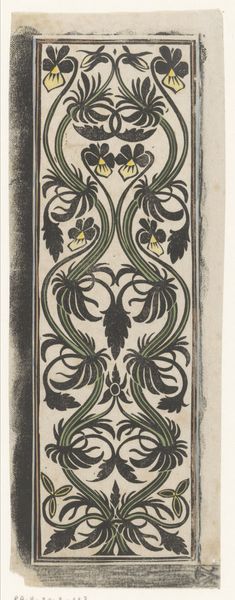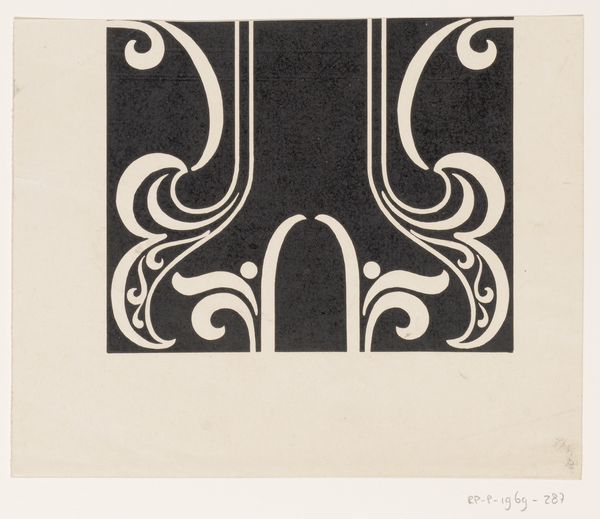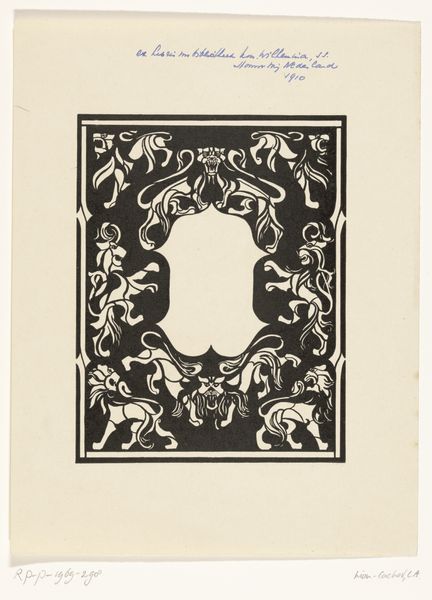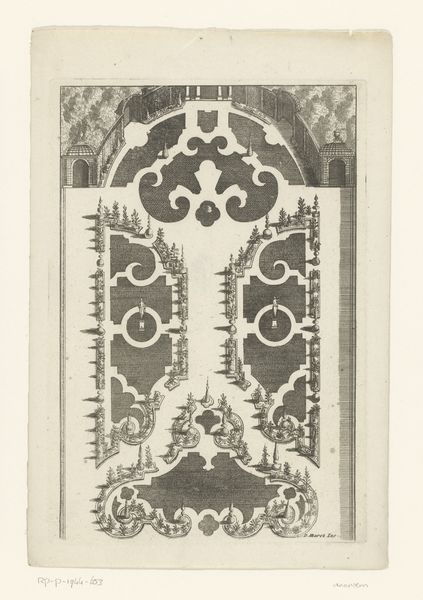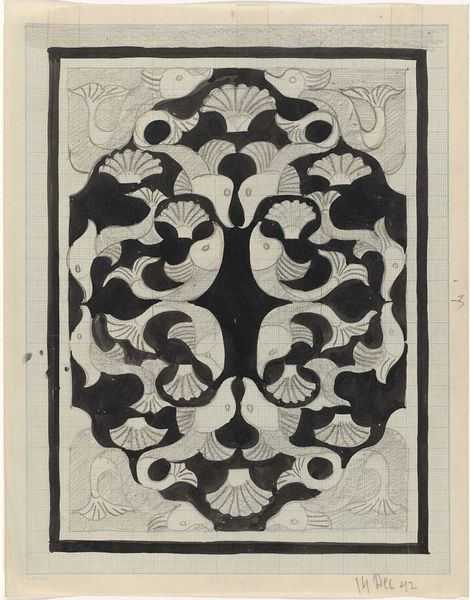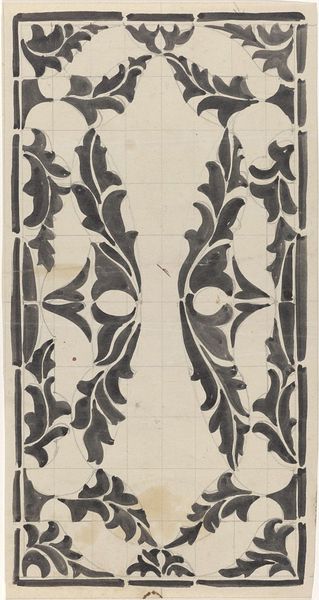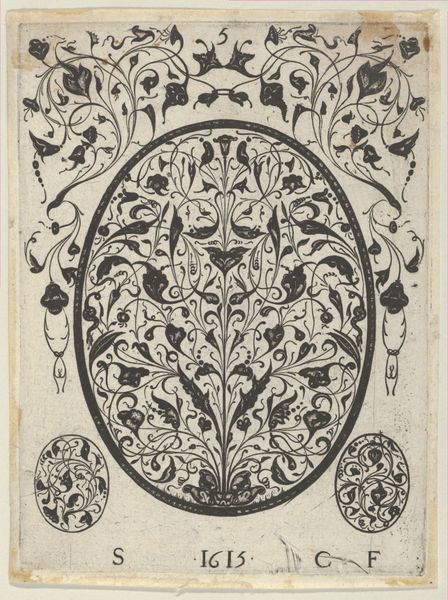
graphic-art, print, woodcut
#
graphic-art
#
organic
#
art-nouveau
# print
#
woodcut effect
#
form
#
organic pattern
#
geometric
#
woodcut
#
line
#
decorative-art
Dimensions: height 380 mm, width 233 mm
Copyright: Rijks Museum: Open Domain
Carel Adolph Lion Cachet created this print, called ‘Siermotief’ or Decorative Motif, at an unknown date, using an unspecified printing technique. Its stylized symmetry evokes the Art Nouveau movement, but also speaks to the specific conditions of artistic production in the Netherlands at the turn of the century. The image creates meaning through the visual codes of the decorative arts, where the aim isn't necessarily to represent the external world, but to establish aesthetic value for its own sake. In the Netherlands at this time, there were strong debates between proponents of pure, autonomous art and those who believed art should serve a social function. Many artists attempted to reconcile these competing values. Cachet’s print is an example of how artists sought to make art a part of everyday life, contributing to a sense of national identity and cultural refinement. Catalogues, archives and design history can help us understand the social and institutional contexts that shaped Cachet’s artistic practice. These illuminate the complex relationships between artistic expression and the broader cultural landscape.
Comments
No comments
Be the first to comment and join the conversation on the ultimate creative platform.
